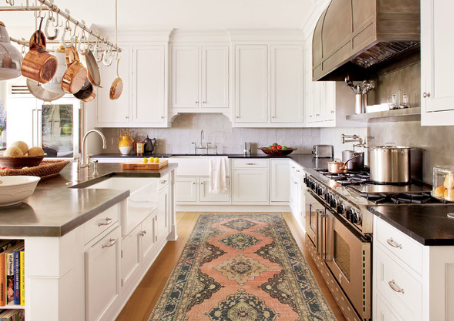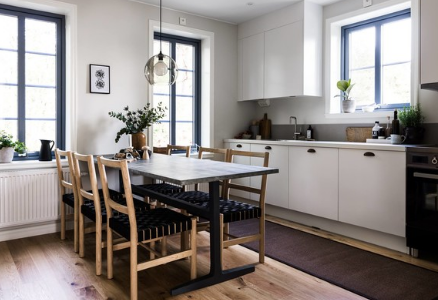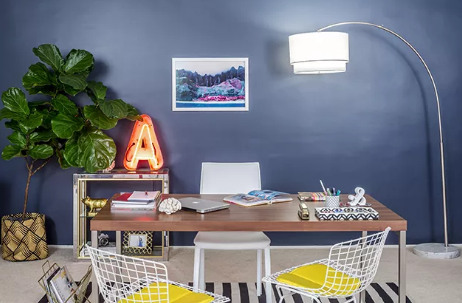
How to Remove Coffee Stains from Carpets
December 17, 2023
How to Make Effective Homemade Carpet Cleaner
December 27, 2023Laying a rug is a great way to bring warmth, color, and personality to any room in your home, especially those with hard floors, which can benefit by softening it slightly. So, as long as you use it the right way and you can avoid any spills and splashes, a rug can be the icing on the cake for your kitchen (yes, your kitchen).
Carpets Add Warmth and Softness

Kitchens tend to have a lot of hard surfaces (cabinets, counters, appliances, and hardware) that can benefit from the softness of the carpet.
If your kitchen looks a little too much like a workspace, a soft, tactile rug can make it feel more like a welcoming part of your home, especially if you have a rug or rug in an adjoining room.

In addition to adding visual warmth and softness, the rug adds real softness so you can stand comfortably on it while cooking.
If you spend a lot of time standing in one place chopping vegetables, stirring, or even just chatting, a little extra cushioning under your feet can make a big difference.
Of course, you’ll need to be prepared to react quickly to any drips, debris, and splashes, so make sure you know how to deal with all kinds of food stains. There are other ways to deal with spills, such as using plain carpets instead of shag carpets, and sticking to darker color palettes like red.
Carpets add Color

If you’re looking to add a splash of color to your kitchen, sometimes the options can be very limited. Painting cabinets in bold colors can feel risky (especially for those with a high focus on resale value). What if you rent a house? If you paint your white or wooden cabinets fuchsia, you can say goodbye to the damage deposit.
Instead, think of a slender rug as a design-savvy way to add a dose of vibrant color to any bold shade you choose.

If you want a more subtle infusion of color, consider multi-toned rugs such as the coveted red-reds and oranges of the classic Persian or Oriental style. The more colors in the rug, the less prominent any single shade will be, so the effect will actually be more colorful and more neutral at the same time.
And the best part: if you want to change your look depending on the season, you can always roll up and put away your rug to create a very different look for summer and winter.

Take this space as an example of how a carpet “colorizes” a room. This kitchen seems to have a strong blue color, but on closer inspection, the only blue items are the carpets and cutlery on the island.
Look for accessories that match the rug’s primary colors, so you have a colorful kitchen to live in.
Carpets Add Pattern and Personality

Designers know that an important element to consider in any décor is the pattern. Whether dramatic or subtle, a certain pattern can add significant energy and personality to a room, even without introducing any color.
In a transitional or cottage-style home, opt for a rug with a tonal geometric pattern to add some life while maintaining a tranquil atmosphere.

For a modern and dramatic approach, simple black and white stripes always give a stylish feel.
For a more traditional or eclectic appeal, look for intricate decorative patterns in a time-tested palette to add a touch of sophistication and sophistication.
How to Choose a Kitchen Rug
Look for a flat, dense woven rug. While luxurious long-haired rugs are beautiful, they can be difficult to keep clean in the living room, let alone kitchen. In spaces where spills, debris, and a lot of wear and tear are inevitable, the best option is a tight, flat weave.
Look for a rug with short and dense fibers that basically locks in dirt and is durable.

When you touch a tightly woven rug with your hands, you should not feel the many individual fibers or yarns, but rather the solid surface of the tight material.
One way to check the density of a carpet is to pick it up and bend it diagonally. If the fiber rows are loosely spaced, the channels between them are revealed when they bend, and these channels are where dirt may reside.
Synthetic fibre. Synthetic fibers such as polyester and nylon each have some advantages and some disadvantages.
Polyester fiber has good water repellent properties and is a great choice for short rugs near the sink. However, polyester fibers absorb grease, which means you’ll need to keep your polyester rug at a good distance from your bubbling pasta sauce pan.
Nylon is not as susceptible to oil stains as polyester, but it has a tendency to fade a little in the sun. The nylon carpet can be tucked well behind the island so that the sun does not reach it directly. Or you can accept the fact that colors change over time.

Olefins are great for creating a wool-like look and are popular in outdoor carpets due to their ability to withstand all kinds of harsh weather. However, it doesn’t necessarily withstand heavy traffic well, so if you spend a lot of time working in the kitchen, it probably won’t last long.
Synthetic rugs tend to have a lower investment than natural fiber rugs, so if you’re looking for a price point that won’t be too painful when it comes to replacing your rug, synthetic rugs are a good choice.
Keep in mind that a waterproof rug won’t save the floor underneath from a serious spill or cause the dirt to disappear, so you’ll still need to react quickly to mess and clean the rug regularly and gently.
Natural fibers. There are many natural fibers that can be used for carpets, but some fibers are more common than others.
Wool is perhaps the best overall material for carpets, naturally hardy, comfortable and with good stain repellency. It also dyes well and can present rich shades. However, these properties come at a higher price than most synthetics.
Jute and sisal rugs are not as luxurious and appealing as wool rugs, but their sturdy and durable textures are attractive in their own right. The stiff grass fiber has a strong beach or cabin-style vibe, and while not soft on the toes, it’s especially good for those who prefer to wear shoes at home.



